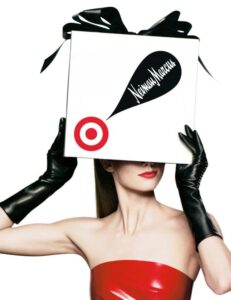Brand Collaborations, Part Two

Like many musical duets, brand alliances sometimes fail to hit the high note
Brand collaborations, if done correctly, break through the clutter in the marketplace and reinvigorate a loyal customer base. A partnership between two brands provides the perfect opportunity to raise awareness, gain new customers, and share new offerings. It’s about the opportunity to increase word of mouth, advertise your brand in new places and to new customers, and to generate free media buzz. Not unlike seeing two singers together, it can be really interesting and work beautifully, but in other instances it really doesn’t make sense.
Brand collaborations generate interest
Many brand collaborations generate interest and attention because there is something about seeing two brands working together that piques our curiosity―and the attention they receive when they are announced, when they launch, and even when they fail. The craze and hype often bring the most value for these brands. People like you and me rush out to buy the product and/or try the new offering before it sells out. There is often an element of time that encourages the builds up the hype. These partnerships are often announced in advance of the launch, allowing excitement to grow and the brands to slowly leak new information. Through collaborations, brands are seen as more innovative and approachable, willing to work with others to ensure happier customers.
 However, much like Stevie Wonder and Paul McCartney’s ill-fated song “Ebony and Ivory” (readers may disagree, but it is considered one of the worst duets ever!), sometimes these partnerships can go wrong. Target has had many successful collaborations with many brands, yet there have also been a few missteps along the way. When the Target x Neiman Marcus holiday collection was announced, buzz was everywhere, but by the time it hit the shelves, the products fell flat. Why? The merchandise failed to reach their core audiences―they were too expensive for Target shoppers and too cheap-feeling for Neiman’s shoppers. The two brands didn’t work together to build a better product, nor did they complement each other to reach new places. Both companies couldn’t get beyond their well understood brand images.
However, much like Stevie Wonder and Paul McCartney’s ill-fated song “Ebony and Ivory” (readers may disagree, but it is considered one of the worst duets ever!), sometimes these partnerships can go wrong. Target has had many successful collaborations with many brands, yet there have also been a few missteps along the way. When the Target x Neiman Marcus holiday collection was announced, buzz was everywhere, but by the time it hit the shelves, the products fell flat. Why? The merchandise failed to reach their core audiences―they were too expensive for Target shoppers and too cheap-feeling for Neiman’s shoppers. The two brands didn’t work together to build a better product, nor did they complement each other to reach new places. Both companies couldn’t get beyond their well understood brand images.
When brand collaborations fail
There are some that never quite bounce back from their collaborative failure and JCPenney understands this more than any other company. JCP announced its partnership with Martha Stewart under the leadership of Ron Johnson as they were exploring a “no sales” approach, which proved to be a failing for their business. Just recently, it was announced that JCPenney interfered with Macy’s contract with Martha Stewart and is liable for profits on the MarthaHome products. Stewart may be liable too. This costly battle added insult to injury as Martha Stewart is continuing her relationship with Macy’s and the JCPenney brand continues to dwindle. Other brand collaborations that seem destined for failure from the very start include Versace and H&M (which eroded the luxury brand by creating a down-market perception) and James Bond and Heineken (can you imagine Bond drinking anything but his shaken-not-stirred martini?).
and H&M (which eroded the luxury brand by creating a down-market perception) and James Bond and Heineken (can you imagine Bond drinking anything but his shaken-not-stirred martini?).
Even failures reel in the press who are excited to announce how relationships might not always be perfect. Collaborations, sometimes seemingly natural and other times, innovative, allow brands to extend their reach and be seen as more than they really are.
In the final part of the series, we will explore how you can increase the chances of getting brand collaborations right while avoiding the pitfalls. And, to read part one follow this link.
Elspeth Monigle is a brand strategist at Monigle.



